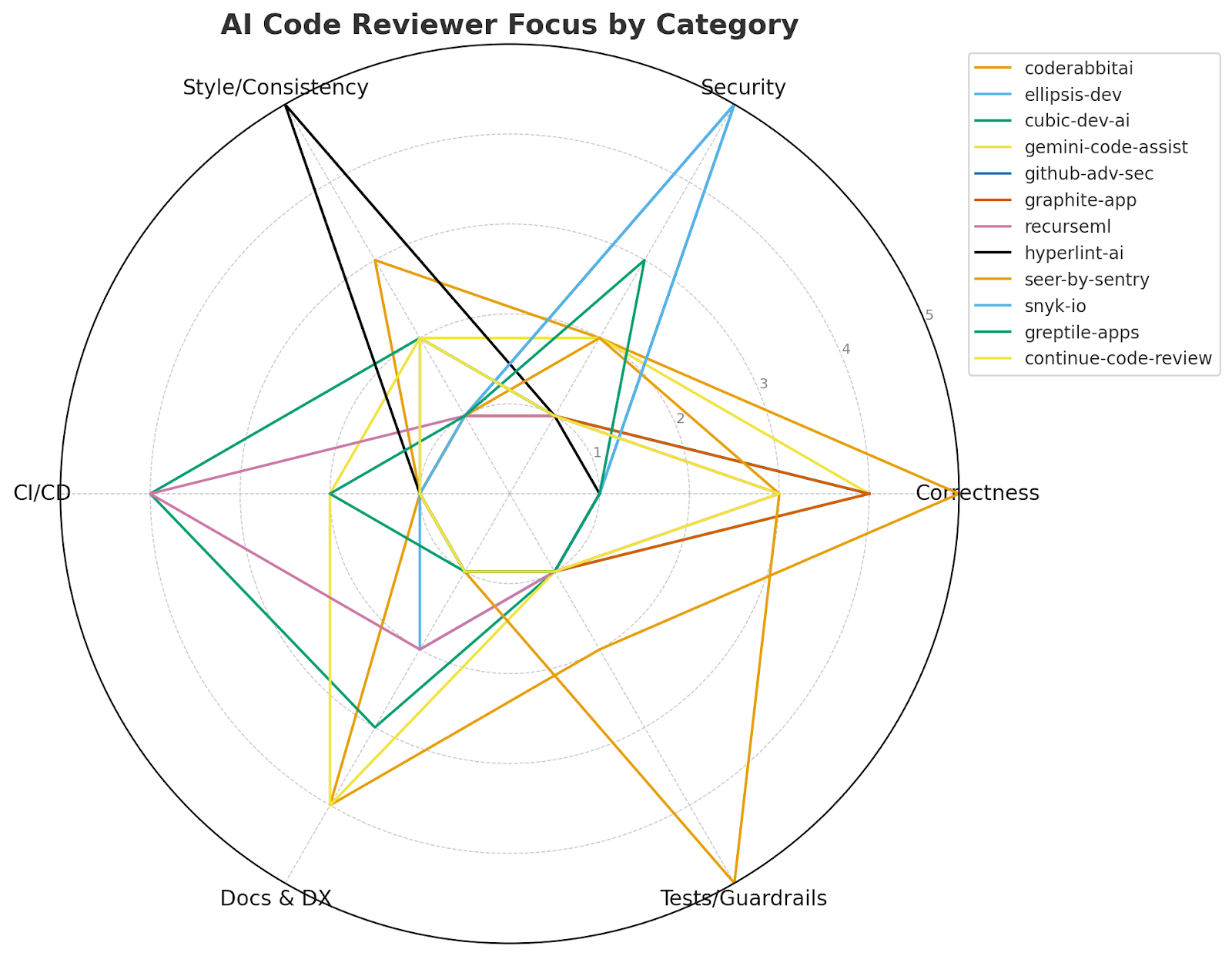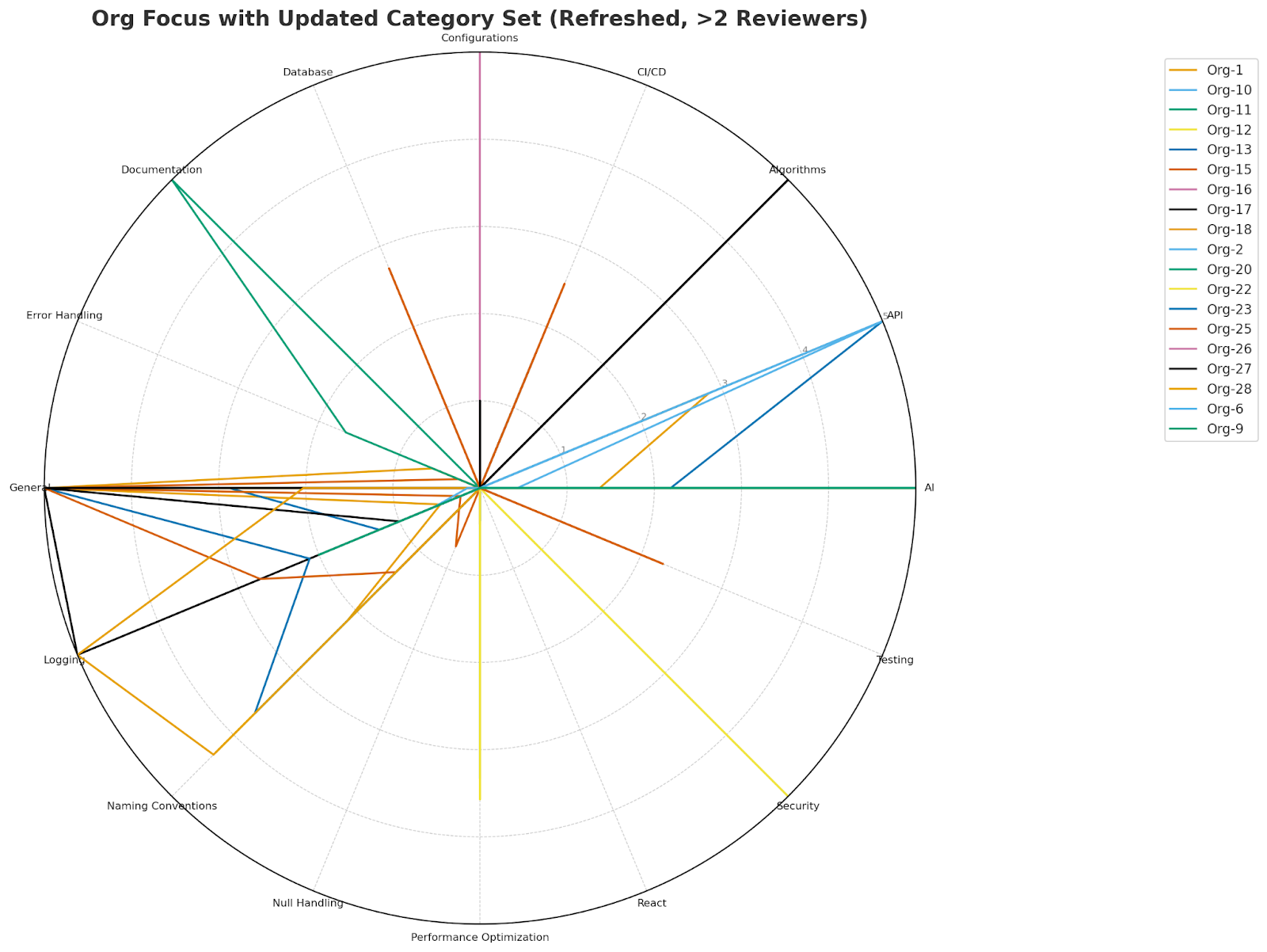.png)
Open source has a funny way of revealing truths about the future of software. One of them is this: AI code reviewers develop personalities.
Based on our observations, the contents of a given repo or even a given PR aren’t really the issue since some reviewers are terse one-liners, some are verbose explainers. Some fixate on security, others obsess over style. In open source projects, that’s fine. Each repo collects its own zoo of bots, each contributing a slice of value.
It's kind of analogous to community contributions as a whole. In a coding project that serves multiple purposes for multiple people, you’re going to see how different contributors push and pull different ways. We built Awesome Reviewers to better understand the trends and best practices across the top open source repositories. With almost 100 of the top repos from React to LangChain, we analyzed thousands of PR comments and the code reviewers' responses. Below see how the different reviewers showed up across key areas of code review.
The Personality of Your Favorite Code Reviewer

So what is this telling us?
- Correctness-first reviewers (like CodeRabbit) flag fragile timing, error handling, and race conditions.
- Pragmatic reviewers (like Ellipsis) go for terse one-liners to catch small safety issues.
- Workflow-focused reviewers (like Cubic and RecurseML) spend time on CI/CD pitfalls and shell script gotchas.
- Security-first reviewers (like Snyk and GitHub Advanced Security) scan for hardcoded secrets, CWEs, and unsafe paths.
- Style reviewers (like Hyperlint) enforce capitalization and formatting rules.
- Catch-all reviewers (like Claude or Continue) provide sporadic notes, often too low-volume to matter.
Read up on expanded details on each reviewer analyzed here.
In open source, multiple personalities can coexist. But inside an organization, generic reviewer personalities create friction:
- Standards drift: Each company encodes its own conventions—naming patterns, logging rules, error semantics—that generic bots don’t understand.
- Workflow mismatch: CI/CD topology, ownership models, and deployment gates vary widely.
- Risk priorities: A payments team doesn’t want the same reviewer behavior as a marketing site.
Generic bots don’t adapt. They become what one of our customers called “faceless droids”. Agents shouting correctness issues into the void, without responsibility for the project’s maintainability.
The Open Source Blueprint: Maintainers and Contributors
There’s a better model, and it’s one we already use in open source. For the past 20 years, OSS has relied on two roles:
- Maintainers safeguard quality, enforce standards, and act with responsibility for the greater good.
- Contributors solve problems and innovate, submitting changes under the rules defined by maintainers.
It works because it encodes roles with responsibility, attribution, and context. It’s a collaborative framework, not faceless labor.
That’s where Baz takes a different stance: we’re not “one more personality in the mix.” We give you the ability to design the reviewer you want that's tuned to your repo, your standards, your workflows.
Baz takes this open source blueprint and makes it practical inside companies.
- Tailored to your repo: Baz reviewers codify your team’s own conventions, not a one-size-fits-all set of rules.
- Aligned with your priorities: Want critical security checks to block merges, while style issues stay non-blocking? You can set that balance.
- Tone you can choose: Strict and blocking, or guiding and collaborative—you decide the reviewer voice that fits your culture.
- Evaluated for fit: Using our internal benchmarks, you can validate reviewers against real production issues before rolling them out.
Where above the graph shows how different code review bots stay within their 'personality' across many code bases, this graph shows how differentiated Baz's customer experience is based on their code base needs.

Closing Thought
The future of AI review isn’t one more personality or one more droid. It’s the ability to design the role you need: a reviewer that acts like a responsible maintainer, tuned to your repo, your standards, your workflows.
Ready to design your reviewer personality? Try Baz free.

